The Local Business Digital Marketing Playbook
Master Marketing Your Business on the Internet Using This Easy to Follow and Implement Guide
What You’re Going to Learn Inside:
(Click any Chapter below to jump directly to that section)
Chapter 1: Why This Local Digital Playbook Was Created and Who Wrote it
Before we dive in, I want to say how excited that I am that you’re reading this digital playbook. Creating this was a labor of love and I hope it helps you to grow your business in the same way I’ve been able to help so many of my clients.
My name is Fred Vinson and I am a retired NFL player who got into Digital Marketing because I was intrigued by how online marketing worked after I retired from football back in 2005. I also needed to find out a way to generate traffic to websites I had taught myself how to build.
I played for the Green Bay Packers, Seattle Seahawks and the Carolina Panthers. Green Bay is still my favorite team which is why my wife next to me in the picture has on the Packer hoodie. So if you’re a Chicago Bears fan you must leave this page now. (just kidding)
So ever since I retired from professional football, I have made it my mission to become an expert in helping brick and mortar businesses grow using Digital Marketing. I’ve spent countless hours learning about and testing just about every digital marketing technique under the sun.
All that research and testing led me to what works, what doesn’t work, and what order you should do everything in to get the biggest bang for your buck.
This “Local Digital Playbook” will help you understand the techniques that you should be implementing in your business and how to be more informed when hiring someone to help you implement them.

This guide isn’t meant to be consumed in one sitting. Bookmark this guide, save it to your pocket account (red share button above), read it in chunks, and come back anytime to keep learning more.
Let’s get started with a 10,000 foot view of what you should be doing to market your business online and in what order.
Chapter 2: Your Local Digital Stack: What Kind of Online Marketing Should Local Businesses Spend Their Money On (And In What Order)

There are so many options out there when it comes to marketing your business online. With all those choices, it’s hard to know what the most effective ways to spend your business’ marketing dollars are.
After years of working with businesses and helping them with their online marketing, I’ve compiled a ton of data that has led me to know exactly what works and what doesn’t. Putting that data into practice has led our clients to being extremely successful with their online marketing.
Businesses that are successful marketing themselves online (and don’t overspend) have mastered something that we call the “Local Digital Stack”.
This “Local Digital Stack” is a term that we came up with to describe the order that you should implement certain online marketing tactics so that you squeeze every dollar of value out of everything that you’re doing online.
When you hear a business owner say that they failed using a certain type of marketing online, it is usually because they used a technique that didn’t have a good foundation.
For example, it doesn’t make a lot of sense to run a Facebook Ad campaign to generate leads for a business if the business has a bad or nonexistent online reputation. The same goes for businesses with a website and/or Facebook Page that doesn’t look great. This campaign typically fails because prospective customers like to do additional research when they see an offer on Facebook. If they see an offer, and then go read bad online reviews and a webpage or Facebook Page that looks like your nephew built it in 1995, that doesn’t make them want to actually claim the offer they saw on Facebook.
I’ve seen a ton of business owners who have run a special offer with Facebook Ads (on their own) that ultimately failed at first due to them not having their “digital house in order”. In short, their brand looked terrible when people did just a little extra checking on them (because their online reviews weren’t that great, and their website and Facebook page weren’t optimized).
If that business were to run a nearly identical Facebook campaign will all their digital assets in order, they would get a much better result.
The big difference is in the groundwork you lay for your campaign before you run it. You must make sure that your website and Facebook page looks great and you have to make sure your online reputation is up to par before you run your campaign. When potential customers see your ad with all your digital assets in place, they will get a good impression of your business and feel good about claiming the offer because of it.
With that said, in what order should you setup your Digital Marketing Activities?
Your “Local Digital Stack” (What Order Should You Do Things?)

As you can see from the Infographic above, the order in which you decide to build your business’ digital marketing presence is important. Let’s walk through what techniques you should be implementing, the order you should be doing it in, and why.
Stage 1: The Foundation (Training Camp)
Making Sure You look Good When They Look for You

In training camp, sport teams lay the foundation for their team and their game time strategy. During this time their players are evaluated to see which players will get the most playing time during the regular season. In this 1st stage of your Local Digital Stack this is where you lay your digital marketing foundation to start competing with other local businesses.
During this training camp stage, your business must implement the 1st 3 digital services and have them in place to even have a chance in the regular season when you’re competing where it counts. Laying your digital foundation is key to not only giving a good impression to potential customers but it sets your business up to have more success in stage 2 of your Local Digital Stack that will help your business drive more customers through your door.
It’s important to understand what happens when a prospective customer hears about your business from a friend, a radio ad, the newspaper, or from any other place you might come up.
Whether it be from a referral or any other marketing channel, the typical person will do a little pre-research on your business before they ever pick up the phone or walk through your front door. Before anyone decides to do business they typically do three things.
The 3 Ways Prospective Customers Research You:
1) They Search For Your Website on Google
First, they’re going to head over to Google and they are going to check out your website. You need to make sure that your website is doing some key things and that it looks a certain way. I cover all of that here.
2) They Read Your Google My Business Reviews
Second, they will read at least 6-10 online reviews. Sometimes this happens before they even see your website. Research shows that a customer reads 6-10 reviews before a consumer can trust your business. More importantly, 93% of consumers read local reviews to decide if a business is good or not. I cover more on the importance on online reviews and how the optimization of your Google My Business listing is related here.
3) They Search For You on Facebook
Third (and sometimes first) people are going to type in the name of your business on Facebook and see what’s happening there. People go to your website to get basic information, they read your Google reviews to see how trustworthy you are and then they search for you on Facebook because they want to get a peek at “what is actually happening on the inside”. I cover more on why your Facebook page has to look great and why you must be active on it right here.
Stage 2: The Business Drivers (Regular Season)
Getting More Business through the Door

In sports, training camp is where teams prepare for the regular season to compete in the real games. The regular season is where the real action happens. In this 2nd stage of the Digital Stack this is where your local business is now in position to compete in the regular season with your local competitors.
Once you have a great website, your Google My Business is claimed with some good reviews and have your Facebook page posting content on a regular basis, you officially have a foundation laid for your business to start reaching out for more business through your digital assets. If you don’t have your foundation laid, your lead generating activities (Facebook Ads and Retargeting Ads) could fall flat when people do a little research on you, after seeing your ads.
With your foundation laid, you want to focus your attention on three “business driving” activities. The first activity is actively getting more 5-star reviews and placing them on your website for social proof. The second activity is designed to get more customers through the door (Facebook Ads). The third is designed to bring customers back to your website who visited your site already to get them through the door with the same offer or a better offer (Retargeting Ads).
The 3 Ways To Drive More Business Through The Door:
1) Display Your Online Reviews on Your Website (Social Proof)
Nothing sells better than social proof. One of the easiest ways to get more money coming into your business is to have an easy way for visitors to view all the reviews you have online right on your website. However any kind of reviews won’t do such as written reviews. Most people are skeptical of written reviews these days just because they can be made up. So, you will need to use some kind of service to display real reviews from the actual review source so that they can be easily verified. I cover the importance of online reviews here.
2) Facebook Ads to New Potential Customers
One of the easiest ways to reach the kinds of people that would be a perfect new customer is through the power of Facebook ads. Unfortunately, most businesses fail with Facebook Ads because they have no idea how to setup the kind of “sales funnel” that works well with this medium. I cover exactly how we successfully use Facebook ads with our clients right here.
3) Retargeting Ads to New Potential Customers
Did you know that 96% of your website traffic never buy? Retargeting all your past visitors to your website is a good way to bring them back to your website but also places your business to be top of mind when they are ready to buy. Following your website visitors around the web through Facebook ads and banner ads displaying your offers and marketing your reputation is a good way to not only brand your business but it’s also a way to be everywhere or what they call “digitally omnipresent”. I cover that here.
Stage 3: The Domination Strategies (The Playoffs)
How To Become Number 1 In Your Market

When sport teams make it to the playoffs, everyone’s game seems to go to another level mainly because the competition is less but stiffer and more competitive. This is exactly what happens in stage 3 of the Local Digital Stack. When you make it to this stage that means you’re doing what only a few competitors are doing. This stage is where your business can take things to another level to start to dominate your local market.
Once you have all the foundation components (Website, Google My Business, and active Facebook Page) and you are effectively driving more income generating business with things like increasing your online reviews to attract more buyers, running Facebook ads and retargeting ads, it’s time to focus on the things that allow you to dominate your local marketing.
These techniques are a little more technical and take a little more time to implement properly but allow you to be years ahead of your competition. We focus on three main “advanced strategies” to help our clients dominate their local markets.
The Three Advanced Digital Marketing Strategies That Allow You To Dominate your Competition:
1) Facebook Messenger Bots
What if you could have a sales person out on Facebook 24 hours a day looking for people who need your services and reaching out to them with an offer that would get them to come in to your business? Facebook Messenger Bots are the next best thing (and they don’t ever sleep). We have had amazing success with Facebook Messenger Bots. You can see an example of how we use them right here.
2) Marketing Funnels
Most business owners don’t understand the difference between their website and a landing page or marketing funnel. Most mistake their service page as a landing page just because it gives information and maybe a call to action. Marketing funnels are distinctively different from a service page on a website. Its sole purpose is to convert your visitor to a buyer. I’ll go into more detail about the difference right here.
3) Local Search Engine Optimization (AKA: Being Loved by Google)
One of the most important digital marketing techniques (but one of the most misunderstood) is getting Google to fall in love with your business. Search Engine Optimization (SEO) is a long-term investment in your business, but it’s one that is important to make. I’ll show you exactly how we help our clients rank for those all-important “business generating keywords” right here.
Stage 4: Additional Strategies
Additional Strategies That Can Have A Positive Effect On Your Business
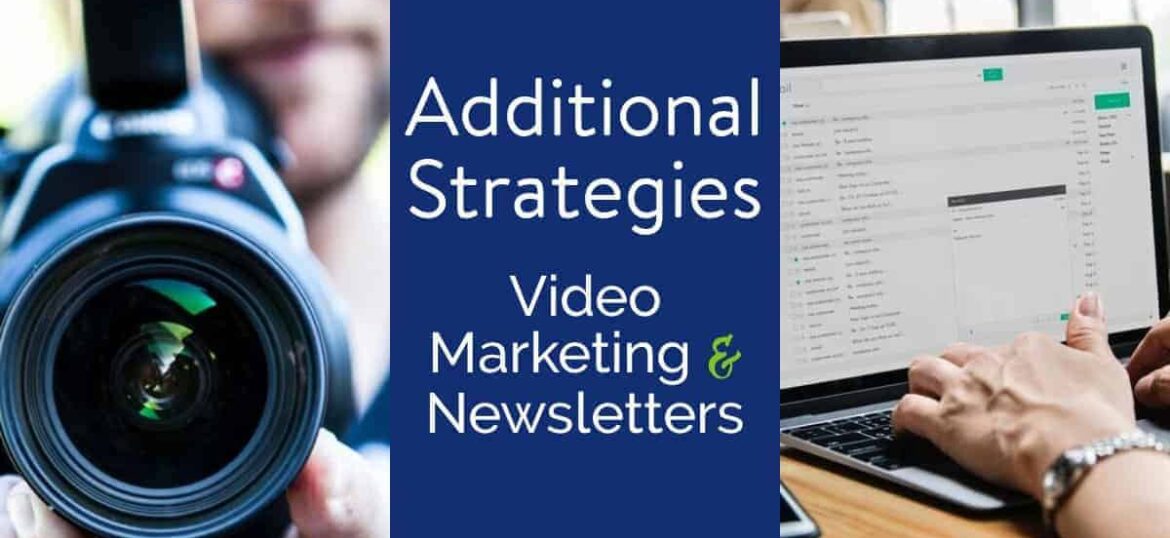
These 2 additional strategies can be implemented at any time of your local digital marketing service stack.
The 2 Additional Ways To Drive More Business Through The Door
1) Email Newsletters To Existing Customers
One of the easiest ways to get more money coming into your business is to get existing customers to come back in and spend more money for services or products that they need. So many business owners and managers forget this, but it’s as easy as sending a reminder via email. The secret is to make sure that your email newsletter is something that contains value. I cover more on how to create an email that drives more income into your business right here.
2) Using Video To Engage & Educate Your Audience
If you’re not making marketing videos to share with your audience, it’s time to stop pretending that video is too expensive (or too technical) to be worth your while. Research shows that businesses who use video marketing grow 49% faster than businesses that don’t. How can you ignore that? The good news is that video doesn’t need to be expensive and you don’t need to be Spike Lee to make a terrific marketing video that will attract new customers. I’ll go over some good video marketing strategies here.
Chapter 3: Your Website and What it Should Do

The most important thing you can do when marketing your business on the Internet is creating a “home base” where people can learn about you and what you do. A great website should be the centerpiece of your digital marketing and all your efforts should lead back to this site except for landing pages (AKA marketing funnels). I talk about funnels here.
Just like you update the decorations and front facing aspects of your physical location as the years pass, you should also make sure that your website is updated and gives a true reflection of what your business is all about.
One of the big mistakes that Brick and Mortar business owners make is thinking that Social Media sites like Facebook have replaced the need for a business website. While it’s true that your Facebook Page is extremely important, your website is still the first place people look for when they want to get more info on your business from the internet.
You must make sure that your website, at the bare minimum, has the core components that it needs to give people what they came for. At the same time, you have to make sure your website makes a great impression every time someone visits it.
The 9 Things Your Business Website Must Have:
#1: A Professional and Current Appearance
It’s not enough to just have a website these days. You must have one that looks good and is easy to navigate.
There is nothing worse than having a website that looks like it was designed in 1995 and hasn’t been touched since. Having an outdated website telegraphs that you and your staff don’t pay attention to details and don’t care about staying current. Whether it’s fair or not, this can shift the way they think about how you operate inside of your business as well.
It’s important that you have a professional designed website and it’s easy to navigate. It’s also extremely important that you have someone who makes sure that your site loads quickly and does weekly check-ins on your website’s health (hackers are always coming up with new ways to do damage so it’s key that you have a pro monitoring things for you.)
#2: A Peak Inside Your Location(s)
Simply put, people want to know what the inside of your business looks like before they ever decide to step foot inside of it in real life. Giving them this window into your physical location goes a long way to helping them make the decision to do business with you.
#3: Pictures of You and Your Staff
People want to know who they will be dealing with when they decide to do business with you. It’s important for them to see your face and the faces of the people they’ll be dealing with once they come in. Putting your staff’s pictures on your website is a critical component to converting casual website visitors into paying customers.
#4: A Contact Page with Your Hours and Address
The number one reason that people will visit your website is to figure out what your hours are, how to contact your business, and how to get to your physical location.
#5: Menu of Services or Products
Having a page that describes your main services or products is a huge part of converting people into customers. A little bit of detail on what someone gets when they spend their hard-earned money with you goes a long way.
#6: A Link to Your Facebook Page
Today’s consumers typically don’t just look at your website when they are deciding whether or not to do business with you. Statistics show that consumers are overwhelmingly also using Facebook to look for your business.
Linking people to your Facebook page from your website instantly gives them a way to learn more about your business without them having to look for it themselves. (we talk about why Facebook Pages are such an important piece of your marketing puzzle here.)
#7: Content that Proves Your Expertise
One of the most important parts of a great website (but most overlooked) is a piece of content that shows that you really know your craft. This content is usually educational in nature and may take the form of a blog post, email download, or digital book.
We create these for our clients (because they usually don’t have time to do it themselves) and this very page you’re on right now is an example of the kind of content that proves your expertise in your field. We have a website, but this piece of content is the kind of thing that really helps people understand what we do and how we can help them.
#8: Onboarding Documents
This one doesn’t apply to every business but is vitally important to those that it does. If you run a business that requires people to have an exam, take a test, or apply for credit, it’s important to share those documents on your website.
This helps your potential customer prepare before they ever walk through the door. It also helps your staff point potential customers to essential documents when they are on the phone with them.
A great example of this would be a Chiropractic clinic having their “new patient health history” forms on their website so that new customers could fill them out before their visit.
#9: An Always Visible Call to Action
No matter what page of your website someone happens to be on, they need a link or call to action to immediately start the process of doing business with you.
This could be as simple as a link that says “call us now” (remember that a large percentage of people visiting your website will be viewing it on their mobile phones).
Chapter 4: Your GMB Listing and Why It Needs To Be Optimized Completely
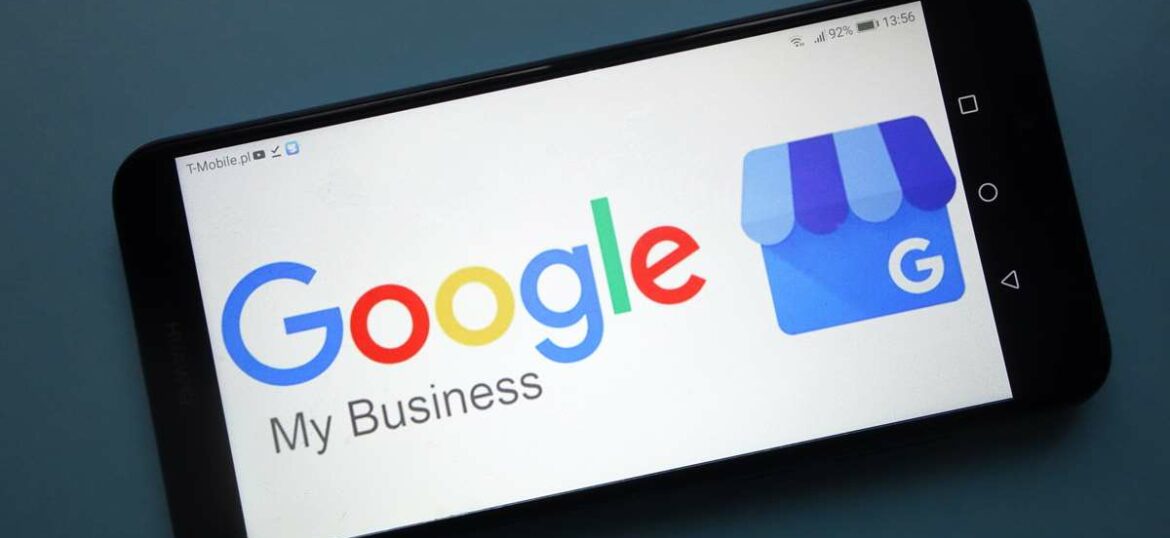
Knowing that Google is Master of the Universe when it comes to search engine use and new customers finding your business, it is vital to understand how important your Google My Business listings are to ranking higher in Google search results.
Claiming and verify a Google My Business listing for each location of your business is the first and most basic step to local search engine optimization (SEO).
This is an easy way to ensure your business shows up in local search engine results. Optimizing your Google My Business listing helps you rank higher in results, above competitors who don’t have a local SEO strategy.
Google likes to keep things in-house as much as possible, so it favors its own accurate and current business listings when giving local search results to search users.
Complete and accurate Google My Business listings that keep their information up to date and get business reviews on their listings are rewarded with higher rankings.
In the past year Google has added a handful of features to help you further promote your business while giving more information to your potential customers.
Learning how to utilize these features gives your business increased visibility online and exposure to more local customers.
11 Ways To Optimize Google My Business
#1 Ensure Business Name, Address and Phone (NAP) is Correct on All Listings
Google wants your name on Google My Business to reflect your business’ real-world name as it is used on your storefront and is known by your customers.
#2 Google My Business Description
This area gives the opportunity to submit content that describes what your business does and what separates you from the competition. Think ABOUT ME webpage content, but more concise.
#3 Get More and More Reviews to Your Google My Business Listings
Encourage customer to review your business by clicking “Write a Review” on your Google My Business page. The facts are clear: The more reviews on your Google business page and the better the rating of those reviews, the higher you are going to rank in local search results.
#4 Update Your Business Hours with Every Permanent, Holiday and Seasonal Change
Many businesses change their hours seasonally or year to year. Look at the hours on your listing and make sure they are up-to-date.
#5 Pay Attention to Map Location and Where Your Local Pin is Positioned
You’ve verified your address is correct. Now take a look at your location on the map and make sure the marker is in the right place. If the marker placement doesn’t make sense or it is on the wrong side of the road, you can drag the marker on that map to your exact business location.
#6 Pick ALL the Best Google My Business Categories for Your Business
Categories on Google My Business is one of those instances where “more is more.” Select all the categories from their list that apply for your business, and don’t be afraid to get specific. “Sports Bar” is more relevant than “Bar” in search results.
#7 Optimizing Individual Practitioners Listings
If you are a public facing professional, with your own customer base, your name is your business name for Google My Business.
#8 Photos, Photos, and More Photos
Adding quality, story-telling photos to your Google My Business listings can go a long way in selling your business, but no photo is speaking volumes as well.
#9 Google My Business Now Includes Videos with Photos in Search Results
Now you can post videos to your Google My Business listings in addition to photos to give search users a richer view of your business. Videos can be up to 30 seconds long, and it’s worth noting that videos can be added by owners AND customers.
#10 Use Google Posts to Promote Your Events, Sales, and Products
Google Posts were introduced to share fresh content with people who found your business through Google Search. This Google My Business feature lets you create posts with content you want to be displayed to customers when they see your business listing on Google search results. Publish your events, products, and services directly to Google Search in the Knowledge Panel and Maps.
#11 Google My Business Q & A
Google Questions & Answers (Q&A) allows local business owners and the public to answer consumer questions asked by search engine users.
Back in August 2017, Google introduced this new feature Questions & Answers feature to Google Maps. December 2017 this feature moved from mobile-only to include desktop display, so all search users will see these questions and answers.
Chapter 5: Your Facebook Page and Why It’s Extremely Important

Over the last few years, Facebook has taken steps that have made it harder for businesses to get their Facebook page’s content to show up in the news feeds of people who like their page. This was done because there were so many business pages and personal pages competing for space and it only made sense to lend more space in a person’s newsfeed to their personal relationships.
Many business owners started to believe that because their pages started vanishing from the newsfeed that there was no longer any reason to put any effort into creating new content for their page.
While the reasons for having a Facebook page for your business and posting to it often have changed, it is actually more important than ever due to one key reason.
Why Facebook Pages are More Important Now Than Ever
The role of a Facebook Page has changed dramatically in the last few years. Today a Facebook page is extremely valuable to businesses because it is the second place (behind only your website) that people search for when they are looking to know more about you.
And more specifically, people go to your website to see your “professional image”. They come to your Business’ Facebook page to get a sense of your “business personality’.
Statistics show that people are overwhelmingly using Facebook as a “first hand source” of information about a business when they hear about them from a friend or from a more traditional marketing source (radio, tv, print, etc).
With the above in mind, I’d like to show you what we do to help our clients stay ahead of their competition and to use their Facebook page to convert new business every single week.
The 5 things Your Facebook Page Must Have:
#1: A Professional Profile Picture with your Logo
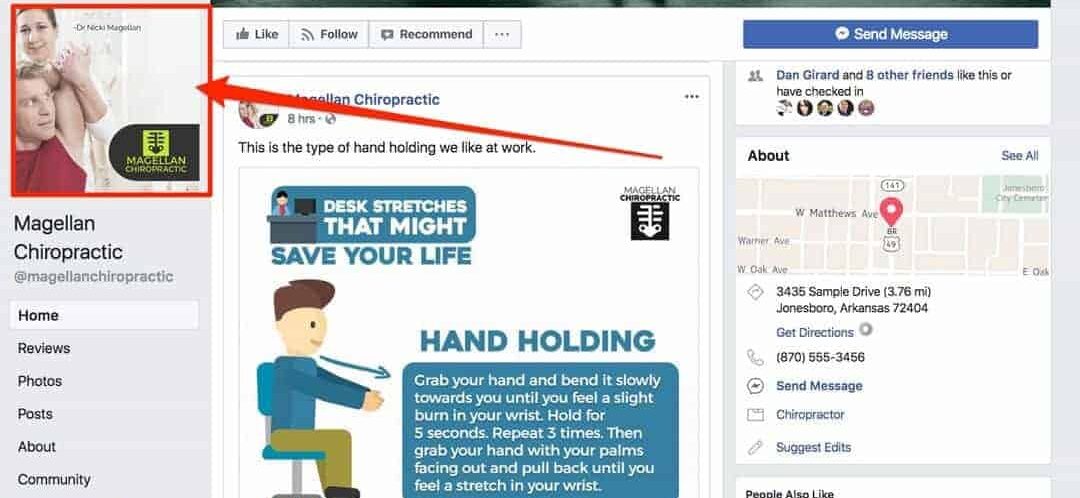
This Picture is going to be one of the key elements that people use to judge your business when they first land on your page or see something that you’ve promoted with a Facebook Ad (more on that soon). You need to make sure that it has your logo featured, looks professional, and isn’t overly complicated.
#2: A Professional Cover Picture
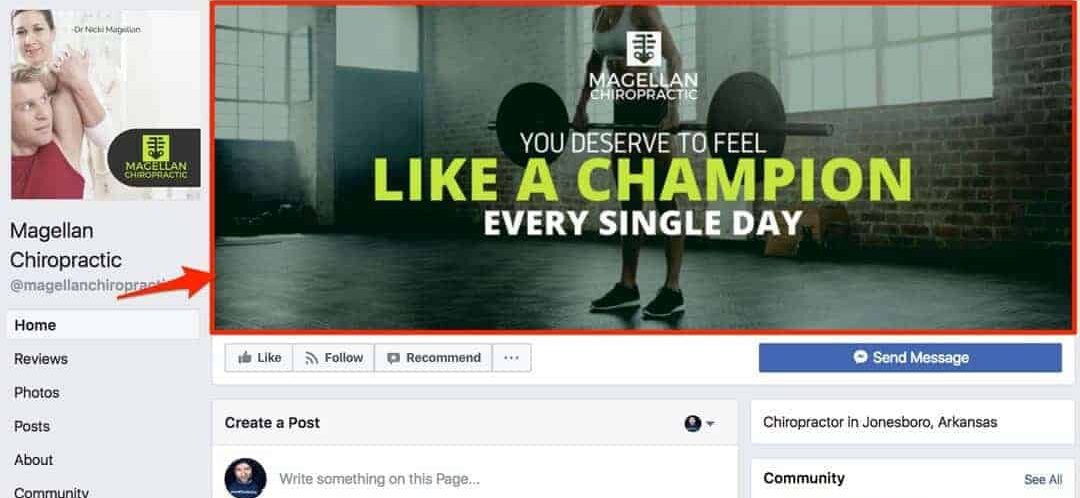
Your page’s cover photo is a great place to showcase your staff, facility, or to give people a hint as to what your business is all about.
#3: An Autoresponse Message
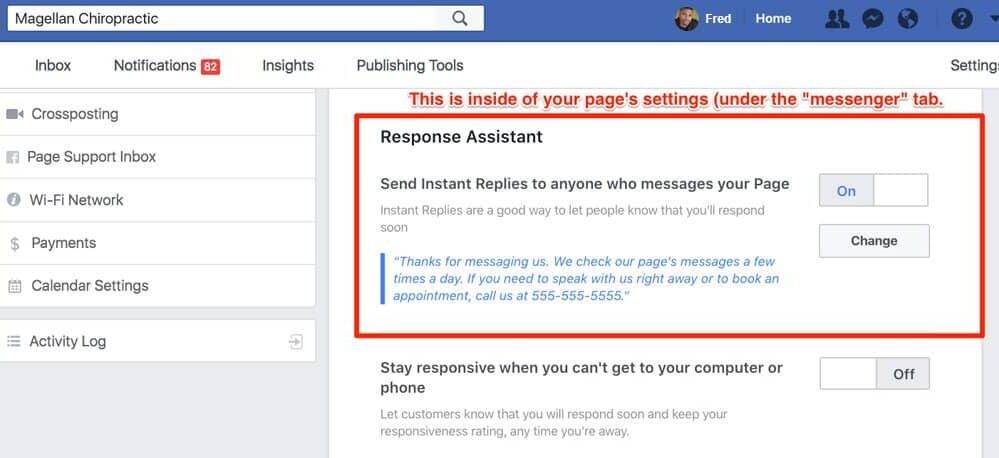
Your staff may not be able to answer every message that gets sent to your Facebook page right away. Because of that, we setup a quick auto-response message on all of our client’s page that will let people know that they will answer their message soon, but to call the business at a certain number if they need help immediately.
#4: A Completely Filled out Business Profile
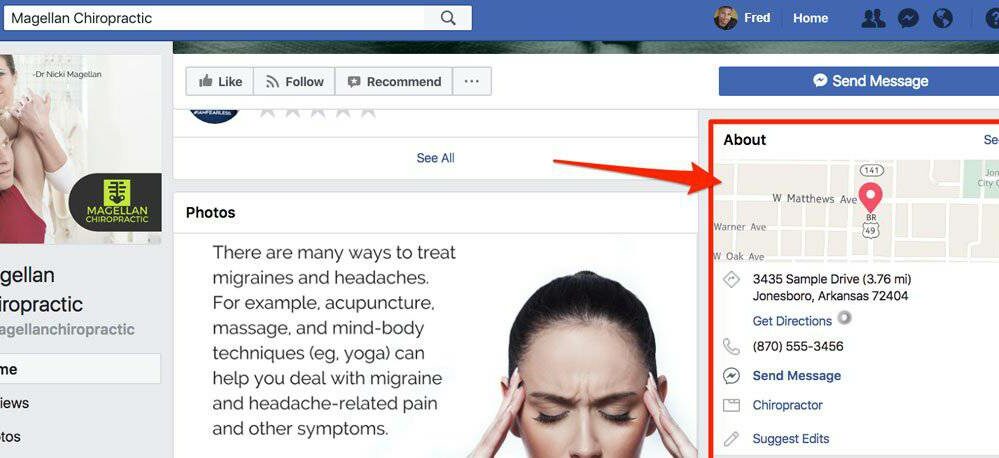
Remember, you are optimizing your page to help people find you when they use Facebook’s search box. This means that you need to pay special attention to how you fill out your business’ profile on Facebook. This is a great guide that will show you exactly what we do when we help a client with filling out their Business page profile.
#5: Fresh Content Posted 1-2x Daily (Minimum 3-5x Per Week)
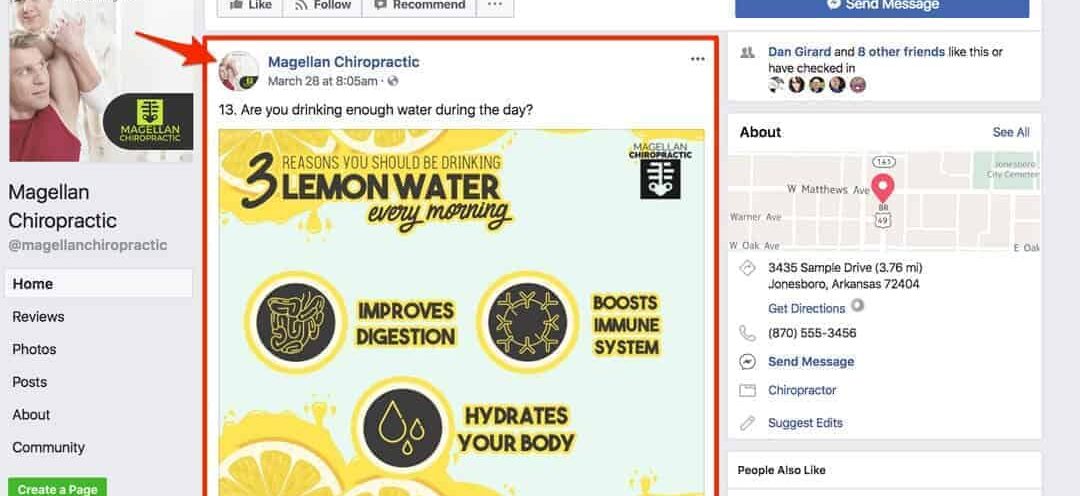
One of the most important things that you must do with your Facebook page is to make sure that it appears current and that it educates people about what you do. To appear current on Facebook (and to appeal to Facebook’s algorithms, you should be posting content 2x a day on your page. If you can’t handle that much you should post at least 2-3 times per week at the bare minimum.
This is something that most of our client’s don’t have time to do, so we take over all of the content creation and posting duties for them. This is critical because it shows people who search for your page that your business is on top of things and paying attention to detail.
Chapter 6: Why Your Online Reputation Is The Foundation Of Your Business
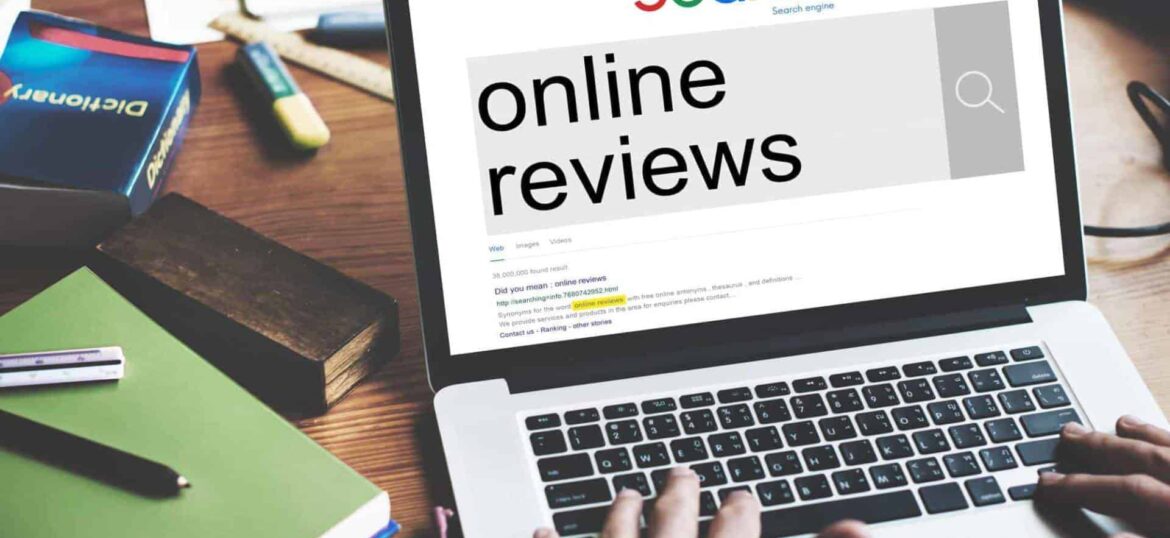
There are many reasons why your online reputation is the actual foundation of your business. The most important reason is that it affects every single aspect of your online marketing. It doesn’t matter if you’re doing billboard ads, Google ads, coupon mailers, radio ads, etc. If your online reputation is bad or non-existent, then it’s a good chance that you’re spending your marketing dollars on sending customers to your competitors.
How is that? Simple. Even though people may see an ad you ran on tv, or on the highway or online, most of them are going to go online and check your reviews before they contact you. If they find out that you’re not very credible in the eyes of other reviewers, then it’s a good chance they will simply find the next company with a better reputation.
Long gone are the days when a #1 position in Google is the only thing you needed to get all the customers you want. The graphic below proves it.
There was a study done by Bright Local on the effects of reviews on local ad clicks. See the results below.
Why Do People Click on Results In The Local Pack?
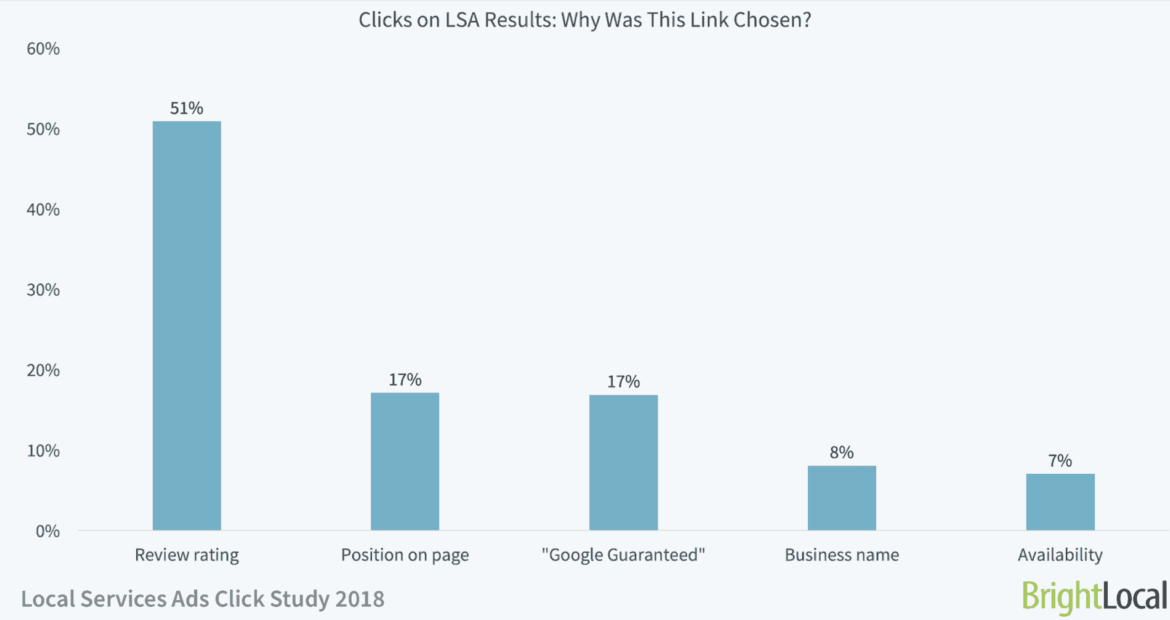
The results speak for themselves. Over 50% of the people clicked on a local ad because of a review rating while only 17% click on a local ad because of its position on the page.
It’s no longer possible for businesses to stick their heads in the sand and ignore the importance of online reviews. Every business needs to create and maintain a system of monitoring, managing & marketing their online reputation.
Chapter 7: How to Drive New Business with Facebook Ads

One of the most powerful and cost effective ways to drive new customers to your front door is to use Facebook Ads to put a great offer in front of a group of people that are likely to want it.
Even though Facebook Ads are a highly effective business growth tool, many business owners out there don’t understand how to use them properly. It’s a lot more complicated than just putting an offer together and then spending a little money to get it in front of a the surrounding community.
Facebook Ads work best when you put the correct offer in front of a specific audience in your community and give them a reason to take action on that offer immediately.
We run Facebook Ad Campaigns for a variety of clients and we’ve found that there is a pattern to building campaigns that work.
Let’s break down the 4 major components of a great Facebook Ad Campaign.
The Anatomy of a Great Facebook Ad Campaign
#1: A Jaw Dropping Offer for a Specific Audience.

And yes, you thought correctly. The face above is what your targeted audience needs to make when they see your offer (or something close it). As a business owner you have to keep in mind that people are not on Facebook to buy from you. They are there to be entertained and interact with their friends and family. However, if you place a jaw dropping offer in front of them, they will buy.
One of the keys to creating an offer that works well for Facebook Ads is to create an offer that is specific to a small subset of people (and that doesn’t fit other people at all). People want to believe that the reason they are getting a deal on something has to do with something special about them.
You’ll see a drastic difference in your conversions when you create offers that are highly tailored to an audience. Facebook allows you to target these people directly in your community, so it only makes sense to customize the offer to speak directly to those audiences.
#2: A Great Landing Page to Get their Info
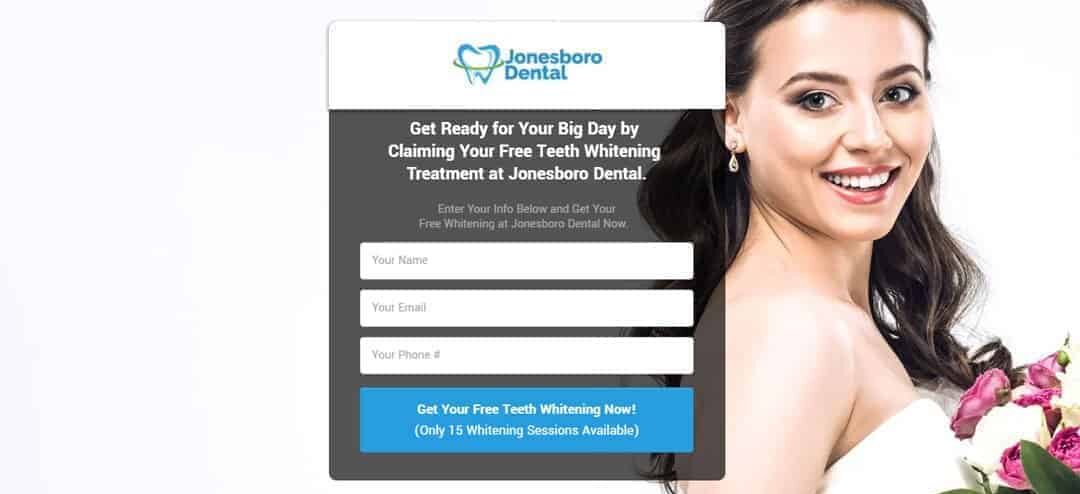
The secret to campaigns that really work is to get people off of Facebook to present the offer.
A “Landing Page” is a special webpage that we create for our clients that allows us to present the offer and get their information without having all of the distractions of Facebook hurting our conversion.
#3: A Thank you Page to Push them to Action
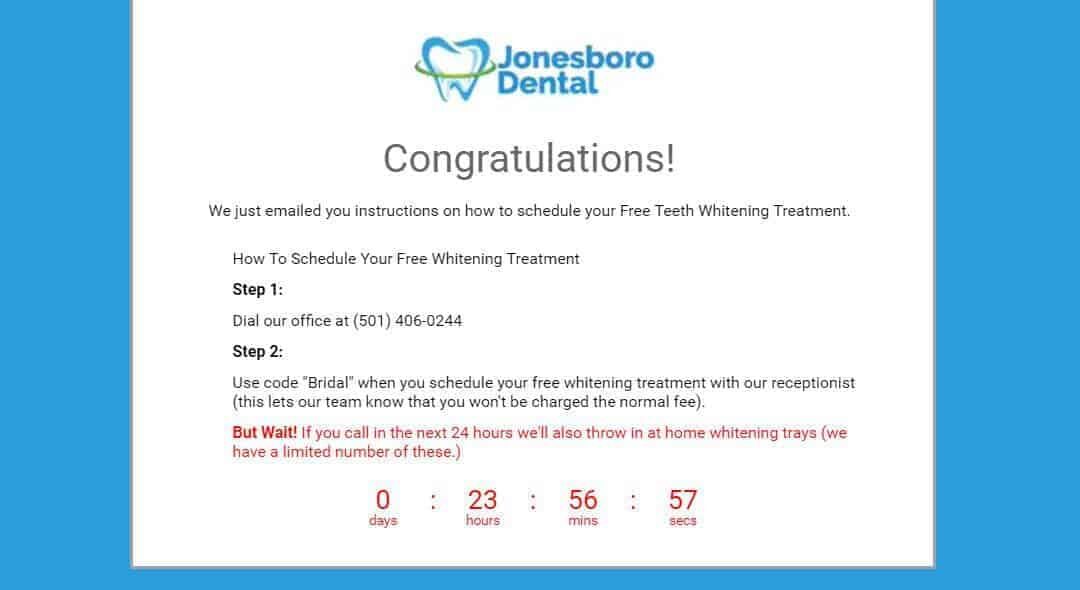
Once someone decides that they want the offer we put in front of them and puts their information in on the “landing page”, we want to send them to a special page that “accelerates” their conversion into a real customer.
To help get people to take action faster, we build a special webpage called a “thank you page” that pushes them to actually pick up the phone or come in to your business right away.
#4: An Eye Catching Facebook Ad Creative
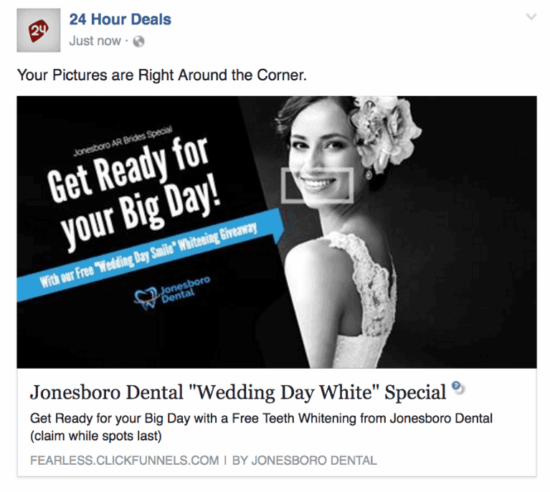
Once you create a great offer and create the pages that you can use to collect leads, you need a great way to put that in front of people.
A Great Facebook ad is “eye catching” and is also pointed at a very specific audience in your community.
Chapter 8: Retarteging and Why You Must Use It
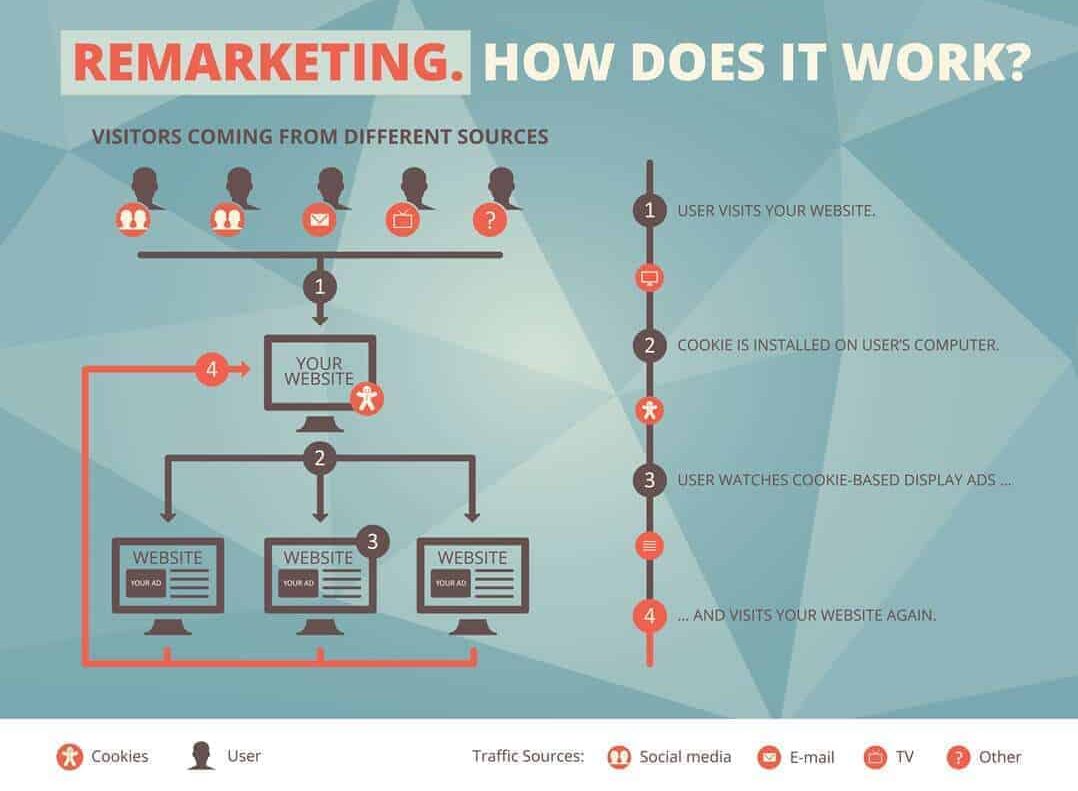
What is Retargeting?
Retargeting is simply using ads to target users that have already visited a website. This type of advertising is done with banner ads, display networks across the web, on social media sites, and any other form of online advertising your company is probably already using.
The idea of retargeting is to entice past customers to come back or to attract people who may have visited the site but left before making a purchase or taking the preferred action the business owner wants them to take. It’s a way to get customers back to the site, and into the business.

When using retargeting effectively, business owners aren’t just sending their message out to the masses and hoping something lands with a customer that’s likely to take action, the way a lot of online advertising works. Instead, it’s a way to really target your advertising to the audience you’re trying to reach. Using this type of advertising, you’re targeting anyone that has visited your website before.
This is how retargeting ads differ from display banner ads that are typically broadcast to a business’ entire target audience rather than just a small portion of it. With retargeting, you are only taking the portion that has been on the website or otherwise expressed interest and marketing to them and them alone.
Chapter 9: What Is A Messenger Bot (And Why You Need One)

Messenger Bots are a relatively new technique in the Digital Marketing world, but one that we’ve had a ton of success with when implementing them for our clients.
What They Really Are…
Chatbots are the automation of messages & triggers that allow us to deploy messenger marketing strategies. A Messenger Bot is a way to leverage the fact that almost everyone out there answers their Facebook Messages right away. We can build very specific campaigns that act like a “Facebook Ad Campaign” (as discussed in the last chapter), but adds in a very personalized follow-up that happens right inside of Facebook Messenger.
What makes these so effective is that the potential customer feels like they are getting instant attention from your business when they start “talking” to your messenger bot.
Why Is This Important?
- We are riding a huge wave in digital marketing. It’s the biggest in communication since email marketing.
- The number of Consumer to Business messages increased from 2 billion to 8 billion in the past year.
- Email is crowded. People are tired of “opting in” on a landing page. Opting into Messenger is WAY easier than email.
- You get all of their real data and more of it.
- Building a bot is much easier/quicker than building a traditional web sales funnel.
4 Reasons Why Every Local Business Should Use Messenger Bots
#1 Grow Revenues
When a messenger bot is working for a business, the business owner doesn’t need to be available 24/7. Customers can still make purchases and get answers to their questions without any wait, and without getting frustrated that the business isn’t available to help them.
#2 Better Relationships With Customers
Businesses always want to learn more about their customers, so they can provide them with the products and services they really need. Messenger bots allow you to see what your customers are asking, how they’re interacting with the bot, and generally get to know them better.
#3 Greater & Easier Reach
Literally millions of people use messaging apps every day. When a business uses a messenger bot within these apps, that’s millions of people making up their audience. There are very few other types of online marketing, or business services for that matter, that can boast that same kind of reach.
#4 Saves Tons of Time
As a business owner, it’s impossible to deal with every customer at once. While you can get to all of them, it takes time. And people can become frustrated by the wait. Messenger bots are the answer. They can handle hundreds of requests simultaneously without limits.
Let’s walk through an example of a messenger bot campaign.
An Example of an Effective Messenger Bot Campaign:
Step 1: Post a Great Offer on Your Page
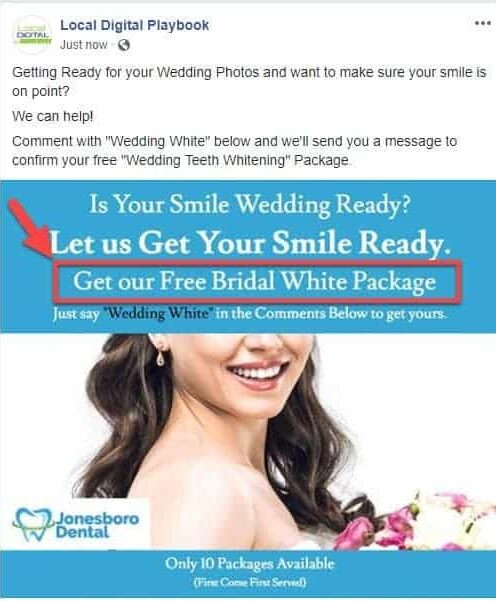
You want to start off with a simple Facebook post that advertises a great offer. This post looks just like any other Facebook post on your page. The magic happens because we’ve connected a “bot” to listen for responses on the post and to “talk back” to people who comment.
Note: We also use a highly targeted Facebook ad to get our post more attention from the surrounding market.
Step 2: Ask people to Comment to Get the Offer
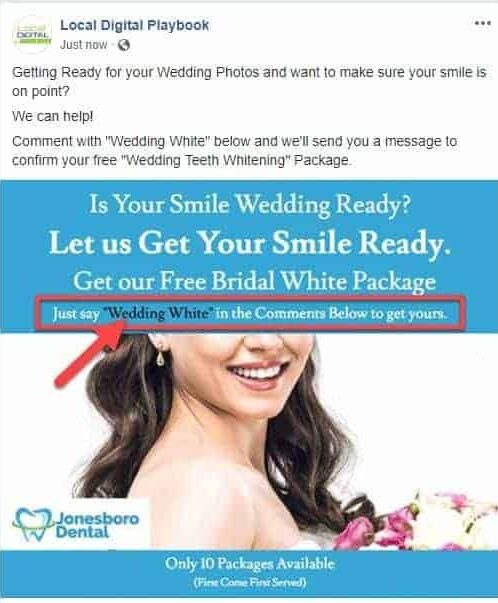
In the example post that we created, you would ask people to comment if they want to take advantage of the offer.
Step 3: The “Messenger Bot” Replies like a Human would
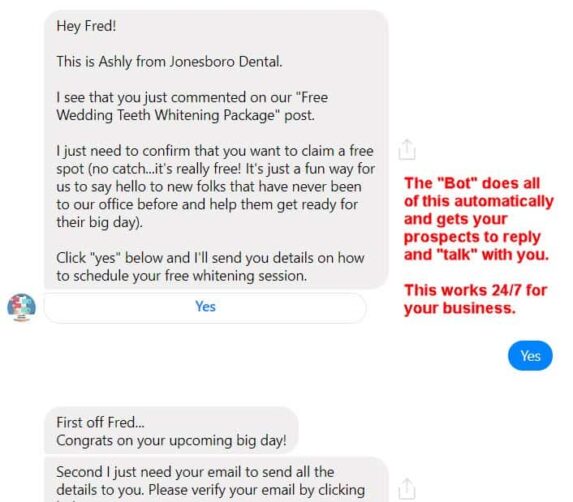
Our messenger bot will wait until someone comments on the post and then it springs into action.
Step 4: The “Messenger Bot” asks for More info
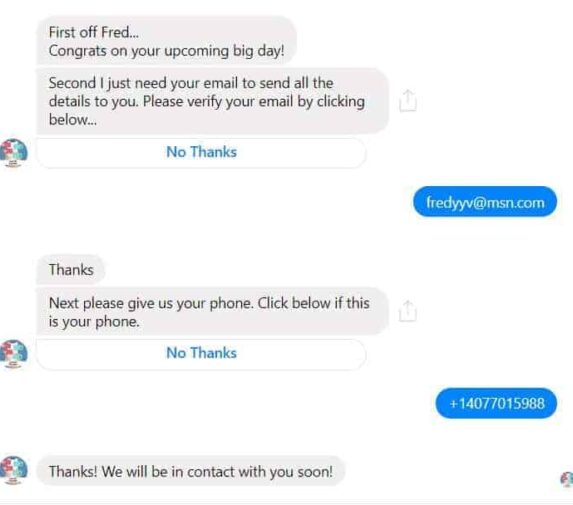
After a little warmup conversation, our messenger bot will ask for an email address and/or phone number so that we can connect with the prospect outside of Facebook.
Step 5: The Business connects with the Lead via Email and Leads to a Phone Call or Visit

We build an email autoresponder that follows up with the potential client and gets them to call or come in to claim the offer during business hours.
Chapter 10: Marketing Funnels and Why They Convert Better Than Your Website
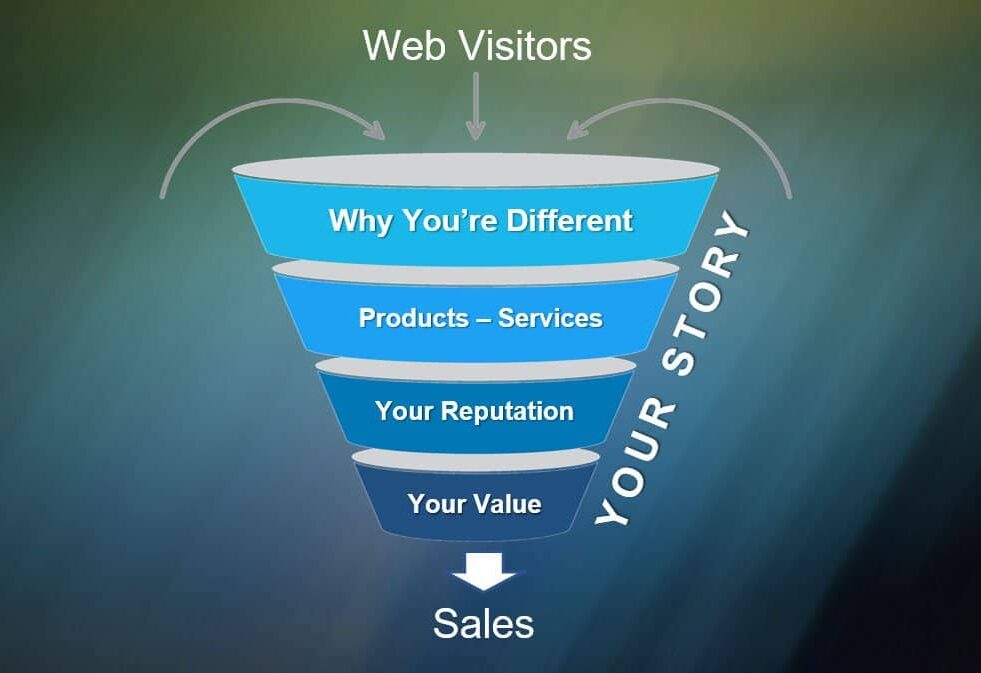
While websites have their importance in the overall picture of your digital playbook, marketing funnels serve a different purpose that’s more directly tied to sales. A funnel is designed to move the visitor into the sales process. It should tell your story with a beginning, middle and end that helps the visitor make a decision to choose you rather than your competitors.
Websites are more like online brochures that are designed to give information to be read. While a website can have call to actions such as “Contact Us” or “Schedule Appointment”, there is a lot of information within a website that can confuse the customer. One of the main things is that there are too many places to click to other pages and lose focus of the main reason they are there.
A marketing funnel only has one page and one focus. There are no links that take the visitor to another page about something else. The sole focus is converting the visitor to a buyer with an offer related to a service or product that you offer. That’s it.
You don’t want visitors to just read. You want them to take action and convert them into a customer. This is what a marketing funnel is designed to do.
Chapter 11: How To Show Up In Google Ahead of Your Competitors
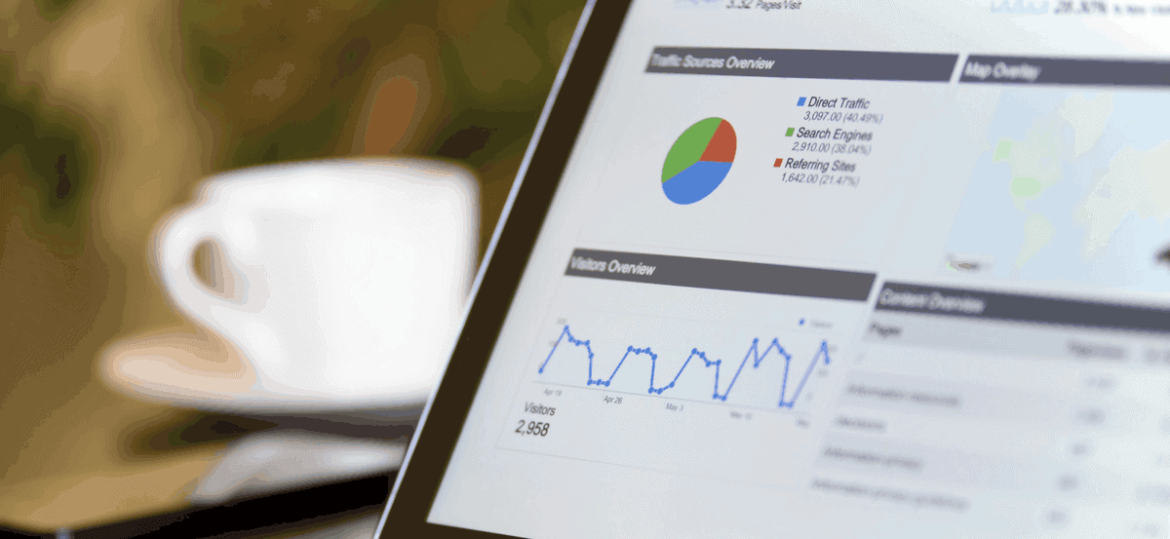
One of the most powerful ways to dominate your market is to make sure that your website shows up first when potential customers search for certain keywords in your market.
While the way Google works may seem random at times, your ranking for certain keywords is actually based on a formula that you can use to your advantage. This is called “Search Engine Optimization” or “SEO” for short.
Ranking higher in Google for certain search terms is something that most people think is very complicated. With a little patience and some basic knowledge of how it all works however, it’s a lot easier to rank in your local market than you might think.
There are literally hundreds of things you could do when it comes to Search Engine Optimization. When we’re working with our Local Clients and we launch a “SEO Campaign”, we tend to focus on a few key elements that we’ve found make the greatest impact.
It all starts with making sure we rank for the right keywords and expands out from there.
Let’s cover the core things that we do when we work to Rank Our Clients Higher on Google.
What Brick and Mortar Businesses Need to do to Rank #1 on Google
#1: Figure out the Keywords that Make you Money
Not all keywords are created equal. One of the core things that you need to figure out before you start optimizing your website is what keywords that you want to rank for.
#2: Make Sure Your Website is Search Engine Friendly
Once you’ve established a set of keywords that you’d like to rank for, it’s important that you optimize your website to reflect that. Making sure that your site makes use of those key phrases (without overdoing it) is a small, but important, part of actually ranking for those keywords.
This is something that most of our clients have no interest in doing themselves due to the tedious and unpredictable nature of the work involved.
#3: Make Sure Your Website is Mobile Ready
One of the keys to being “Google friendly” is to make sure that your site is mobile friendly. This means that your website looks equally good on a phone’s screen as it does on a computer’s screen.
Your site being “mobile friendly” or not can drastically affect where your site ranks in the search results.
#4: Regularly Create Keyword Focused Content that is Interesting
One of the most important ways that we help our clients rank for certain key terms is through the use of regular new content on their site.
The key to doing this correctly to write content that is interesting to your core clientele but also plays well with the Google’s Search algorithms.
This is something that is often overlooked by traditional SEO firms, but it vitally important as Google’s algorithms have evolved.
#5: Get Strategic Links from Others
One of the core elements to ranking higher in a local market is to have a strategic strategy of getting the right websites to link back to your site.
Often this involves getting other important local websites to link to you using the keywords you wish to rank for. This sends a signal to Google that your site is a local authority on a topic and results in higher rankings for that term.
#6: Leverage Your Facebook Page to Spread Your Content
If you’ve laid a good foundation with your site and Facebook page, it’s important to link the two up.
Google is always looking to see “social signals” that are related to a topic. Getting your latest blog posts to show up on Facebook can be a big boost as it can start the process of getting your content shared by other people.
We focus a great deal of effort on making sure our clients have great content and that it is something that is “share worthy” on Social Media. This ultimately helps in our effort to rank our client’s websites high in the search results for our desired key terms.
Chapter 12: Using Newsletters To Get More Business From Existing Customers

One of the easiest ways to make more money in your business is to get your existing customers to come back more often and to buy more services/products from you.
This marketing strategy is one of the easiest to implement for any business. Most businesses already have a list of existing clients and their email addresses. Most of these existing clients already love the business and the products that they sell. They just need a subtle reminder to come back in and visit.
This can be done with a simple email newsletter that is sent out once a month. This newsletter functions to cut through all the noise of your existing customer’s daily lives and remind them why they fell in love with you in the first place.
When writing newsletters for our customers each and every month, the key is making sure that the email that you send out isn’t something that is just the latest promotion. It has to be something they look forward to reading because it feels personal and because it helps them.
With that said, there are 4 key components to every email newsletter that you should write for our customers. These 4 things are the key to why newsletters have a good chance in driving extra business through the door (without their customers feeling like they are being “sold to”).
How to Write A Great Newsletter For Your Business
#1: Open With Something Topical
The first part of your email newsletter should be something that makes it easy for your readers to relate to you. When you write newsletters for you customers, you typically want to open up with something that is seasonal or has to do with a holiday that everyone in the area is celebrating.
This establishes a bond early in the newsletter and opens the door for you to talk more about anything that follows.
#2: Teach Them Something In “x” Number of Steps
The next section of your newsletter is all about teaching your audience something that will instantly impact their lives. This is something that relates to the time of year but also relates to your business and your expertise.
This section is all about providing value but also about reminding existing customers why they trusted you in the first place.
#3: Remind Them What You Do Daily
Next, you should slip in a little section where you talk about something going on in your business that relates to the first 2 sections that you just covered. This section is all about reminding them that your business is still there and still doing what they do every day.
#4: Call them to Action
Finally, you tell them to call your business or come in to take advantage of an offer.
Watch the video below for a quick example of how you can get all of the above done in around 500 words.
Chapter 13: Incorporating Video: The Future of Marketing

Video is not only critical to your success online, it’s also easy to create. There are literally dozens of video tools and mobile apps available online that make video creation easy and fun. All you have to do is do a quick Google search, pick one and start creating.
What Kind of Video Should You Make?
The thing about video marketing is that it’s so incredibly versatile. You can make almost any type of video you want, but here are a few ideas to get you started:
- Demo a product or shoot a how-to video. The key to any kind of online marketing is to offer value to your customers. How-tos and demos are easy and inexpensive to make – and the truth is, nobody is more qualified than you are to tell people about your product.
- Give a behind the scenes tour. Do you have a unique manufacturing process, an enthusiastic staff, or an interesting origin story? Make a video to let your customers know about it.
- Record interviews with company leaders or staff, or shoot some “man on the street” style videos with customers. This can be a terrific way to grab some off-the-cuff client testimonials and product reviews.
- Speaking of testimonials, ask some of your customers if they’d be willing to sit down to record a video testimonial. Or, take it a step further and make a video case study of one of your clients. Most consumers today say that they look up reviews and testimonials online before making a purchase, and videos add a personal touch that makes them hard to resist.
Below is a perfect example of a video done by a real estate agent. The video answers a question that many home sellers have and the agent does a good job answering the question through video. Take a look…
What Video Marketing Can Do for Your Business
It’s no accident that video marketing is so popular. Most businesses find video marketing to be an effective way to communicate with existing customers and attract new ones. Here are just a few of the ways getting into video marketing can help you:
1) It Can Boost Your SEO
You might not be aware of this, but YouTube (which is owned by Google) is actually the world’s second-largest search engine. It’s also the world’s third-most trafficked website. Not only is YouTube a great way to share your videos, the information you include (such as keywords and links to your website) can boost your search ranking, and that’s a big benefit.
2) It Can Increase Conversions
Research shows that customers are about 80% more likely to convert on a page that includes video – and they’re 64% more likely to make a purchase.
3) It Encourages Social Sharing
Videos are some of the most popular content on social media sites like Facebook and Twitter. In fact, Facebook has recently added features like auto play and view count to its embedded video player, and Twitter now has a native app that allows viewers to make and edit videos up to 30 seconds long.
4) It Gives You A Leg Up In Marketing to Mobile Customers
As mentioned earlier, videos account for about 50% of mobile traffic – and 40% of customers say that video on a website increases the chances they will make a purchase using a mobile device.
The benefits are undeniable.
Chapter 14: How To Get Someone To Do Everything For Your Business
I realize the amount of folks that you have contacting you every week who want to provide digital marketing services for you. I also realize that its hard to know if they can actually help you and even if they know what they are doing.
I hope that this guide has given you a good foundation so that you understand what is available and what should be done in what order. I built my Digital Marketing Agency so that I could help Brick and Mortar Business owners keep up with the quickly changing Digital Marketing Landscape and to always get them positive Return on their Investment.
If you have any questions at all about how to implement any of the above in your business, feel free to contact me and just ask.
No matter who you decide to use to help you build your business with the Internet, I hope this guide has been a powerful jumpstart and got you going on the right path and helps you make an informed decision when you finally do choose a provider.
Thanks so much for reading!
Call or Email me Anytime.
I’m always delighted to answer any questions you might have.

